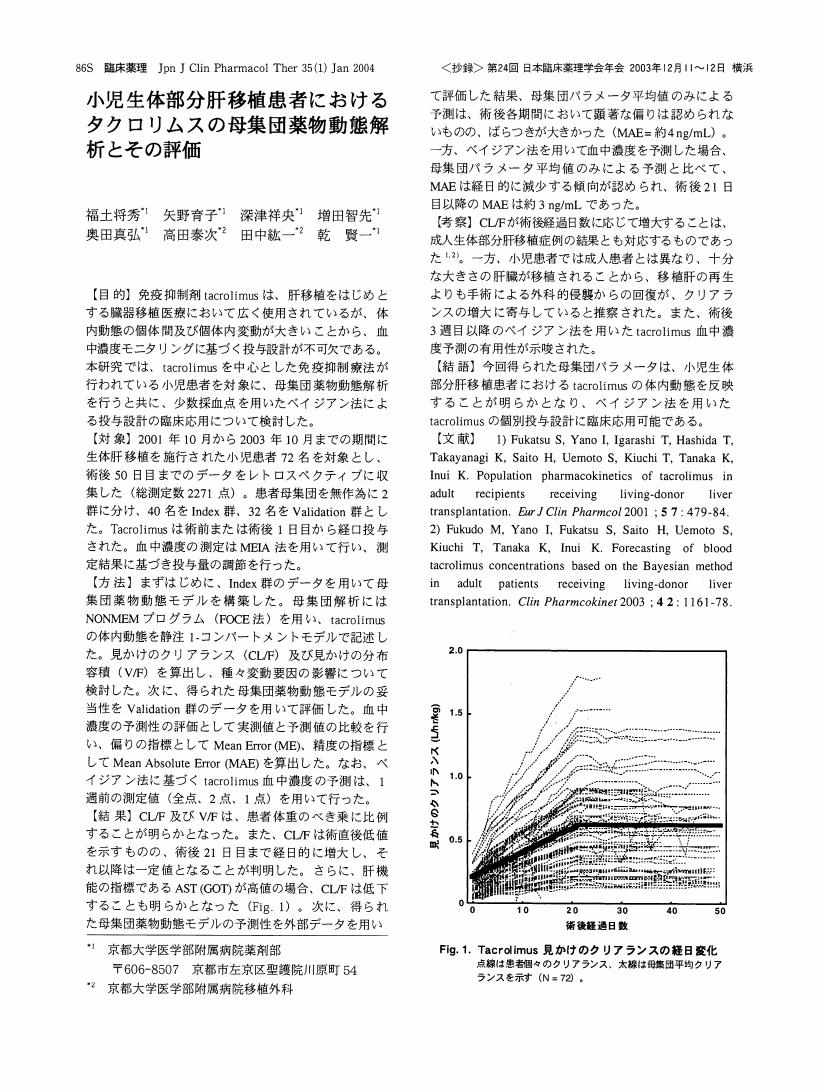31 0 0 0 OA テルミサルタン錠との一包化によりアスピリン腸溶錠は成分量および溶出率が低下する配合変化を起こす
- 著者
- 岩山 訓典 久保 靖憲 小野 尚志 笠茂 紗千子 飯田 慎也 大滝 康一 山田 峻史 安達 知輝 福土 将秀 粟屋 敏雄 田﨑 嘉一
- 出版者
- 一般社団法人日本医療薬学会
- 雑誌
- 医療薬学 (ISSN:1346342X)
- 巻号頁・発行日
- vol.44, no.7, pp.333-340, 2018-07-10 (Released:2019-07-10)
- 参考文献数
- 6
One-dose packages are useful for managing complicated medication regimens for older patients. We experienced a case of Bayaspirin® tablet 100 mg (BA) and Micardis® tablet 40 mg (Mic 40) that were fused in a one-dose package at the time of medicine reconciliation. To our knowledge, there are no previous reports assessing the quality of these tablets caused by this physical incompatibility. Therefore, we aimed to examine this phenomenon and its impact on the drug compositions, as well as to identify the mechanisms.BA and Mic 40 in one-dose packages were stored at 30℃/75% relative humidity (RH) or 93%RH condition for 1 week. The stability evaluations were performed on appearance change, hardness, content, and dissolution rate. The active ingredients in each tablet were investigated to determine the mechanisms.Mic 40 showed changes in appearance and hardness, while BA showed a changed appearance, and reduced content and dissolution rate. The enteric coatings of BA and the additive in Mic 40 had an influence on the mechanism of incompatibility.Mic 40 contains meglumine, which is hygroscopic and deliquescent. Therefore, meglumine absorbs moisture and becomes a basic solution. Methacrylic acid copolymer LD dissolved in this basic solution results in adhesion with Mic 40 and leads to a decrease in both the content and the dissolution rate in BA. This is the first study to analyze the physical incompatibilities of enteric-coated aspirin tablets with non-coated telmisartan tablets in one-dose packages and provides useful information for clinical practice.
4 0 0 0 OA 高齢者に対するリナクロチドの有効性と安全性の検討
- 著者
- 石郷 友之 下坪 達人 髙田 遼 中野 敬太 藤居 賢 北川 学 木明 智子 中田 浩雅 福土 将秀
- 出版者
- 公益社団法人 日本薬学会
- 雑誌
- YAKUGAKU ZASSHI (ISSN:00316903)
- 巻号頁・発行日
- vol.141, no.2, pp.255-262, 2021-02-01 (Released:2021-02-01)
- 参考文献数
- 25
- 被引用文献数
- 2
The efficacy and safety of linaclotide in elderly patients are poorly understood. Herein, we aimed to assess the efficacy and safety of linaclotide in elderly patients in real-world setting. We retrospectively enrolled consecutive patients who started linaclotide therapy at Sapporo Medical University Hospital from October 1, 2017 to December 31, 2019. The efficacy and safety of linaclotide were examined in relation to various factors, including age (<65 or ≥65 years) and dose (0.25 or 0.5 mg/d). Fifty-two patients were enrolled, 60% of whom were over 65 years old and 40% were female. Thirty-six patients received a linaclotide dose of 0.25 mg/d. The most common side effect was diarrhea, but there was no difference in the incidence of diarrhea between the elderly (64.5%) and non-elderly patients (42.9%, p=0.130). No significant difference was observed with respect to improvement in constipation in the elderly (83.9%) and non-elderly patients (71.4%, p=0.318). Additionally, the difference in efficacy of linaclotide in patients who received a reduced dose (80.6%) vs. those who received the recommended dose (75.0%) was not statistically significant (p=0.719). Multivariate analysis revealed that age, gender, and dose were not associated with diarrhea induced by linaclotide treatment. However, concurrent treatment with constipation-inducing medications [odds ratio (OR) 5.79, p=0.047] and linaclotide monotherapy (OR 11.1, p=0.040) were both risk factors contributing to diarrhea. Linaclotide is effective and safe for use in elderly patients. The incidence of diarrhea may increase when linaclotide is administered alone or concurrently used with medications that cause constipation.
